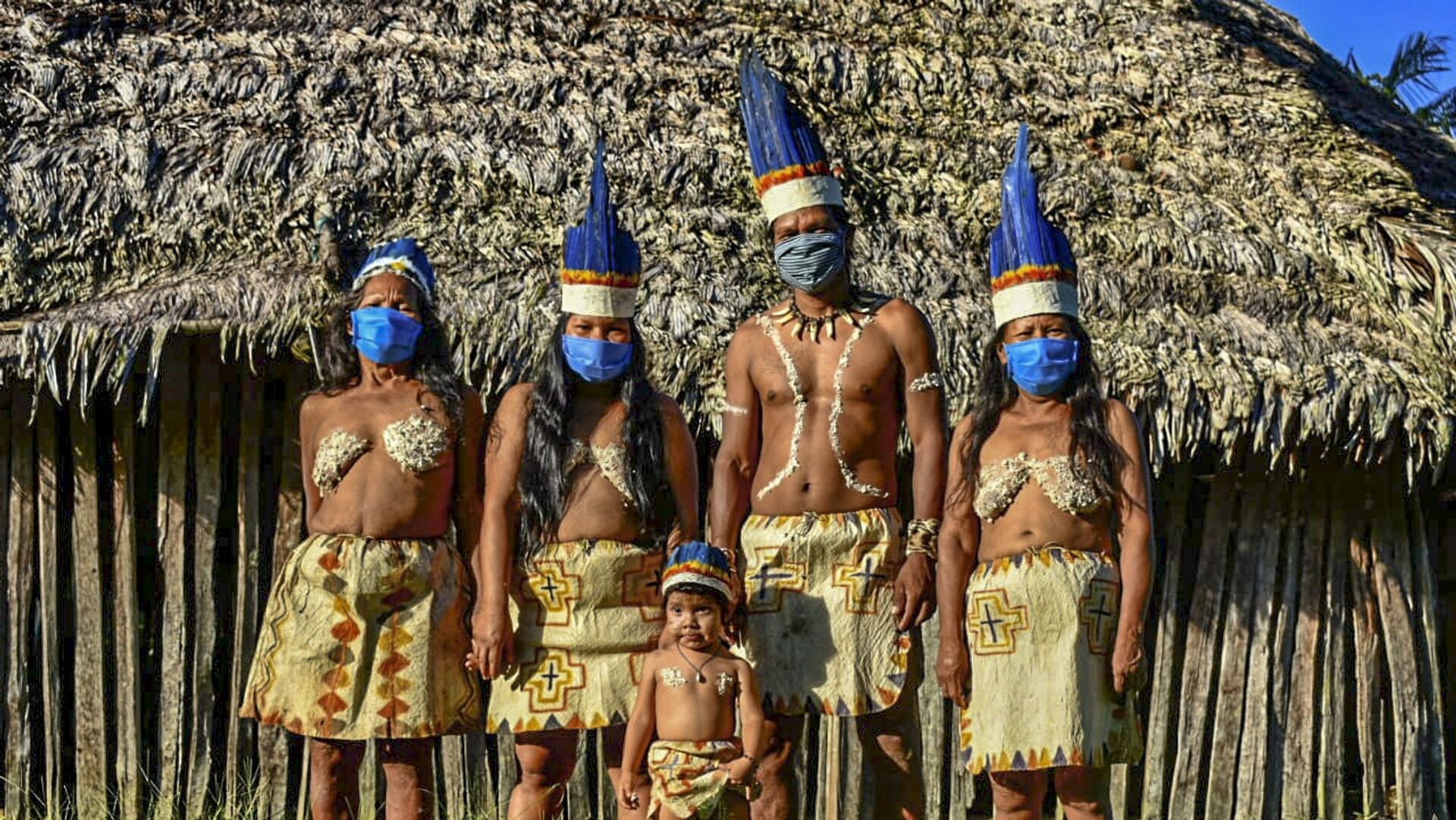Preserving the Cupeño Language: The Importance of Keeping Indigenous Languages Alive

Cupeño people are a Native American tribe who historically inhabited the region now known as San Diego County in Southern California. The Cupeño language belongs to the Uto-Aztecan language family and is closely related to other indigenous languages spoken in the region. It is characterized by its complex grammar, including a rich system of verb conjugation and noun declension.
Before European colonization, the Cupeño people had a thriving culture and a strong connection to their land. However, with the arrival of Spanish missionaries in the 18th century, their way of life was disrupted, leading to significant changes in their language and culture. Today, there are only a handful of fluent speakers of Cupeño left, mostly elderly individuals who are working tirelessly to pass on their knowledge to younger generations.
The Threat of Language Loss: Causes and Consequences
Language loss among indigenous communities is a complex issue with multiple contributing factors. One major cause is historical trauma resulting from colonization, forced assimilation, and the suppression of indigenous languages and cultures. Government policies that prioritize dominant languages in education and public life also play a significant role in language loss.
The consequences of language loss are far-reaching and have a profound impact on indigenous communities. Language is not just a means of communication; it is a repository of cultural knowledge, values, and traditions. When a language dies, a unique way of understanding the world is lost forever. Language loss also leads to a disconnection from cultural identity, as language is closely tied to one’s sense of belonging and heritage. Furthermore, the loss of indigenous languages contributes to the erosion of biodiversity, as traditional ecological knowledge encoded in these languages is crucial for sustainable land management.
Efforts to Preserve the Cupeño Language: Past and Present
Recognizing the urgency of preserving the Cupeño language, various efforts have been made over the years to document and revitalize it. In the past, linguists and anthropologists worked with Cupeño elders to create dictionaries, grammars, and other resources to document the language. These efforts were crucial in preserving the linguistic knowledge of Cupeño but did not address the issue of intergenerational transmission.
In recent years, there has been a shift towards community-led language revitalization efforts. The Cupeño Language Committee, composed of fluent speakers and community members, has taken the lead in developing language revitalization programs. These programs focus on creating opportunities for intergenerational language transmission through immersion programs, language classes, and cultural events. The involvement of the community is essential in ensuring the long-term sustainability of these efforts.
Despite these initiatives, there are significant challenges in preserving the Cupeño language. The small number of fluent speakers poses a significant obstacle to intergenerational transmission. Additionally, the lack of resources and funding for language revitalization programs hinders their effectiveness. However, despite these challenges, there is a growing recognition of the importance of indigenous languages, and efforts are being made to support and promote their preservation.
The Role of Community in Language Preservation
| Efforts to Preserve the Cupeño Language: Past and Present | |
|---|---|
| Number of fluent Cupeño speakers in 1900 | 1,000 |
| Number of fluent Cupeño speakers in 2021 | 5 |
| Number of Cupeño language classes offered in local schools | 0 |
| Number of Cupeño language revitalization programs | 2 |
| Number of Cupeño language immersion programs | 1 |
| Number of Cupeño language dictionaries published | 1 |
| Number of Cupeño language speakers needed for language survival | 50 |
Community involvement is crucial in language preservation efforts. Language revitalization is not just about teaching vocabulary and grammar; it is about creating an environment where the language can thrive and be used in everyday life. When the community takes ownership of language revitalization, it ensures that the language becomes an integral part of daily interactions, cultural practices, and educational systems.
Successful community-led language revitalization efforts often involve a combination of formal and informal learning opportunities. Immersion programs, where participants are immersed in the language and culture for extended periods, have proven to be effective in revitalizing endangered languages. Language nests, where young children are exposed to the language from an early age, have also shown promising results. Additionally, community events such as language classes, storytelling sessions, and cultural celebrations provide opportunities for people of all ages to engage with the language.
The Importance of Language Revitalization Programs
Language revitalization programs play a crucial role in preserving endangered languages. These programs not only provide opportunities for language learning but also contribute to the overall well-being of indigenous communities. Language revitalization has been shown to have positive impacts on mental health, self-esteem, and cultural pride among community members.
Furthermore, language revitalization programs contribute to the preservation of traditional knowledge and cultural practices. Indigenous languages often contain unique vocabularies related to traditional ecological knowledge, medicinal plants, and spiritual beliefs. By revitalizing these languages, communities can ensure the survival of this valuable knowledge for future generations.
Several successful language revitalization programs serve as models for other communities facing similar challenges. The Maori language revitalization efforts in New Zealand have been particularly successful. Through a combination of government support, community involvement, and educational initiatives, the Maori language has experienced a revival in recent years. This success story serves as an inspiration for other indigenous communities striving to preserve their languages.
The Benefits of Bilingualism and Multilingualism

Bilingualism and multilingualism have numerous advantages, both for individuals and society as a whole. Research has shown that being bilingual or multilingual enhances cognitive abilities such as problem-solving, creativity, and critical thinking. It also improves memory and multitasking skills.
From a societal perspective, language diversity is a valuable asset. Multilingual communities are more inclusive and have a broader range of cultural perspectives. Language diversity also contributes to economic growth, as it facilitates communication and trade between different communities. Furthermore, preserving indigenous languages helps to challenge dominant narratives and promote cultural diversity and social justice.
The Cupeño Language in Education: Challenges and Opportunities
Incorporating the Cupeño language into education is a crucial step in its revitalization. However, there are significant challenges in implementing indigenous language programs in educational settings. Limited resources, lack of qualified teachers, and resistance from educational institutions are common obstacles faced by indigenous communities.
Despite these challenges, there are opportunities for language revitalization through education. Some schools have successfully integrated indigenous languages into their curriculum, offering language classes as well as cultural education. Bilingual education programs, where subjects are taught in both the dominant language and the indigenous language, have also shown positive results in language preservation.
Moreover, technology can play a significant role in supporting language revitalization efforts in education. Online resources, mobile apps, and digital platforms provide accessible and interactive learning materials for language learners. These tools can be particularly beneficial for individuals who do not have access to formal language classes or fluent speakers in their community.
The Connection Between Language and Cultural Identity
Language is closely tied to cultural identity. It shapes the way we perceive the world, express ourselves, and interact with others. For indigenous communities, language is an essential part of their cultural heritage and a means of preserving their unique identity.
When a language is lost, a significant part of cultural identity is also lost. Language loss can lead to a disconnection from traditional practices, values, and beliefs. It can erode the sense of belonging and pride in one’s heritage. Therefore, preserving indigenous languages is not just about linguistic diversity; it is about safeguarding cultural diversity and ensuring the well-being of indigenous communities.
The Urgency of Preserving Indigenous Languages
The preservation of indigenous languages is an urgent matter that requires immediate attention and action. Indigenous languages are not just relics of the past; they are living languages that hold immense value for the present and future generations. By preserving these languages, we can ensure the survival of unique cultural knowledge, foster cultural diversity, and promote social justice.
The case of the Cupeño language serves as a reminder of the challenges faced by indigenous communities in language preservation. However, it also highlights the resilience and determination of these communities to revitalize their languages. By supporting community-led initiatives, investing in language revitalization programs, and promoting bilingual education, we can contribute to the preservation of indigenous languages and the empowerment of indigenous communities.

It is our collective responsibility to recognize the significance of indigenous languages and take action to preserve them. By doing so, we can create a more inclusive and diverse world where all languages and cultures are valued and celebrated.
If you’re interested in learning more about the Cupeño language, you might also find this article on “Unlocking the Mysteries of Arapaso Language: A Journey into the Indigenous Tongue of South America” intriguing. It delves into the unique vocabulary and grammar of this fascinating indigenous language. Check it out here.
FAQs
What is Cupeño Language?
Cupeño Language is a Native American language spoken by the Cupeño people of Southern California.
How many people speak Cupeño Language?
As of 2021, there are no known fluent speakers of Cupeño Language. However, efforts are being made to revitalize the language.
What is the history of Cupeño Language?
Cupeño Language has been spoken by the Cupeño people for thousands of years. However, due to colonization and forced assimilation, the language has been in decline since the 19th century.
What is being done to revitalize Cupeño Language?
Efforts are being made by the Cupeño people and linguists to revitalize the language. This includes creating language learning materials, hosting language classes, and recording and preserving existing Cupeño Language materials.
What is the current status of Cupeño Language?
Cupeño Language is considered critically endangered, with no known fluent speakers. However, efforts to revitalize the language are ongoing.

 Afrikaans
Afrikaans Albanian
Albanian Amharic
Amharic Arabic
Arabic Armenian
Armenian Azerbaijani
Azerbaijani Basque
Basque Belarusian
Belarusian Bengali
Bengali Bosnian
Bosnian Bulgarian
Bulgarian Catalan
Catalan Cebuano
Cebuano Chichewa
Chichewa Chinese (Simplified)
Chinese (Simplified) Chinese (Traditional)
Chinese (Traditional) Corsican
Corsican Croatian
Croatian Czech
Czech Danish
Danish Dutch
Dutch English
English Esperanto
Esperanto Estonian
Estonian Filipino
Filipino Finnish
Finnish French
French Frisian
Frisian Galician
Galician Georgian
Georgian German
German Greek
Greek Gujarati
Gujarati Haitian Creole
Haitian Creole Hausa
Hausa Hawaiian
Hawaiian Hebrew
Hebrew Hindi
Hindi Hmong
Hmong Hungarian
Hungarian Icelandic
Icelandic Igbo
Igbo Indonesian
Indonesian Irish
Irish Italian
Italian Japanese
Japanese Javanese
Javanese Kannada
Kannada Kazakh
Kazakh Khmer
Khmer Korean
Korean Kurdish (Kurmanji)
Kurdish (Kurmanji) Kyrgyz
Kyrgyz Lao
Lao Latin
Latin Latvian
Latvian Lithuanian
Lithuanian Luxembourgish
Luxembourgish Macedonian
Macedonian Malagasy
Malagasy Malay
Malay Malayalam
Malayalam Maltese
Maltese Maori
Maori Marathi
Marathi Mongolian
Mongolian Myanmar (Burmese)
Myanmar (Burmese) Nepali
Nepali Norwegian
Norwegian Pashto
Pashto Persian
Persian Portuguese
Portuguese Punjabi
Punjabi Romanian
Romanian Russian
Russian Polish
Polish Samoan
Samoan Scottish Gaelic
Scottish Gaelic Serbian
Serbian Sesotho
Sesotho Shona
Shona Sindhi
Sindhi Sinhala
Sinhala Slovak
Slovak Slovenian
Slovenian Somali
Somali Spanish
Spanish Sundanese
Sundanese Swahili
Swahili Swedish
Swedish Tamil
Tamil Tajik
Tajik Telugu
Telugu Turkish
Turkish Ukrainian
Ukrainian Urdu
Urdu Uzbek
Uzbek Thai
Thai Vietnamese
Vietnamese Welsh
Welsh Xhosa
Xhosa Yiddish
Yiddish Yoruba
Yoruba Zulu
Zulu